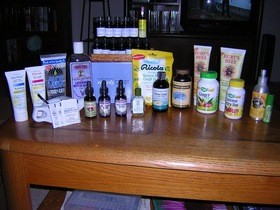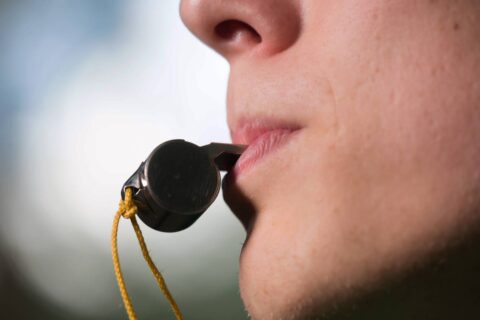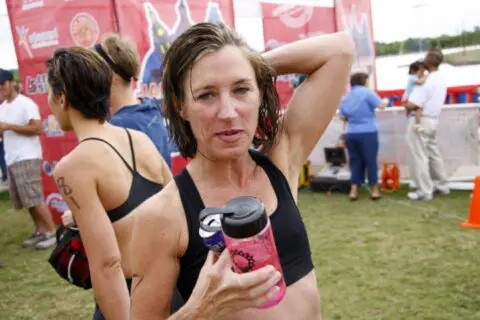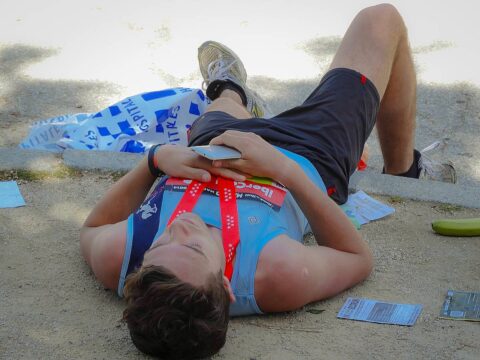 I’m over 40. Though that doesn’t prevent me from being an endurance athlete, the aches and pains have multiplied compared to my 20’s and 30’s.
I’m over 40. Though that doesn’t prevent me from being an endurance athlete, the aches and pains have multiplied compared to my 20’s and 30’s.
After a long run, I walk gingerly through the house, grimace in pain when getting out of a chair, and normally have difficulty sleeping that night. If I had a dollar for every bottle of ibuprofen I’ve used, I’d be set even if Wall Street collapsed… again.
But some time ago, I did some research on NSAIDs and grew concerned. I began exploring alternatives.
The first change I made was in the form I used ibuprofen.
I took the pills for a long time, but they began messing up my stomach. So I found a topical application called IB Relief.
My next step was experimenting with other anti-inflammatory alternatives like topical Arnica, Traumeel, and blends such as Peaceful Mountain Tendon Rescue. I found that these were helpful and seemed to be just as effective as the ibuprofen.
I injured my lower back doing free-weight squats, and was eventually referred to a sports doctor. He prescribed a couple of medications. When I picked them up at the pharmacy, I was shocked that one of the medications cost $250! I didn’t get it.
The whole issue motivated me to do some exploration of our healthcare system as a whole.
Over-The-Counter NSAIDs
One specific area I investigated had to do with alternatives to over-the-counter and prescription drugs, especially those designed to offer pain relief.
The most common pain relief option is NSAIDs (Aspirin, Ibuprofen, Aleve, Advil, Motrin, etc.). They are also available in much stronger prescription form. From 1997 to 2005, NSAID use in the U.S. rose 90%.
There are some worrisome statistics about NSAIDs.
According to the American Journal of Medicine in July, 1998, the number of hospitalizations resulting from the use of prescription NSAIDs was over 107,000 and the number of deaths from them in 1999 was 16,500.
If deaths from gastrointestinal toxic effects of NSAIDs were tabulated separately in the National Vital Statistics reports, these effects would constitute the 15th most common cause of death in the United States.
Alternatives To NSAIDs
So, is there an alternative to NSAIDs when it comes to pain relief?
That question led me to explore the world of essential oils. An essential oil is a natural extract from plants.
Many people think of essential oils in terms of their aroma, but essential oils also have medicinal or therapeutic properties.
For an essential oil to qualify as "therapeutic-grade" it must be:
- Produced from plants
- Extracted through proper distillation methods
- Pure – free of chemicals, pesticides, and heavy metals
- Potent in its phytochemical profile
Young Living is the largest supplier of therapeutic-grade essential oils in the world.
There are multiple ways to use essential oils such as: aromatherapy, topical application, and internal use with a capsule.
Top 10 Essential Oils For Pain Relief
I did some poking around and discovered there are 10 essential oils that relate to pain relief:
#1 Clove – approved by American Dental Association as a dental anesthetic.
#2 Balsam Fir – has significant anti-inflammatory properties.
#3 Peppermint – has cooling effect on pain and inflammation.
#4 Lavender – tissue regeneration properties.
#5 Copal – high content of beta-caryophyllene, an effective pain reliever.
#6 Wintergreen – powerful anti-inflammatory.
#7 Nutmeg – powerful anti-inflammatory.
#8 Rosemary – analgesic and anesthetic in nature.
#9 Marjoram – stimulates the capillaries and clears muscles of toxic waste making it ideal for use on sore muscles, and has strong anti-inflammatory properties.
#10 Helichrysum – known as most effective essential oil for pain relief because it supports the regeneration of nerves and nerve endings.
Triathletes Using Essential Oils
Thankfully, you don’t have to travel around the world and cut down trees to get these oils. Essential oil suppliers do this, and eventually it ends up in a small bottle that you can use in a diffuser, put in a capsule, or use in topical fashion.
Essential oil suppliers also blend these oils for various purposes. For example, I use Ortho Sport for muscle soreness, strains, and pulls.
Heather Butcher, 7-time Ironman competitor and triathlete coach, utilizes Young Living essential oils in various ways: lavender and PanAway for muscles, joints, and tendons, and NingXia Red and Core Supplements as recovery supplements.
After years competing, to start doing your
best times in your mid-thirties is unheard of. I hadn’t changed my training schedule at all; I attribute the improvement in my performance to the products I was using. — Heather Butcher [Essential Lifestyle Magazine Volume 4, Number 1]
Essential Oils: A Viable Alternative
In a nutshell, when it comes to pain relief, anti-inflammatory and regenerative products related to the aches, pains, strains, and pulls of common triathlon injuries, NSAIDs are not the only game in town.
I want to encourage you to explore natural alternatives. Essential oils are readily available from many health food and aromatherapy stores, and available on the Internet. Although readily available, the quality of essential oils varies drastically from one vendor to another.
Our family experimented with essential oils and found Young Living therapeutic-grade essential oils to be effective. These are the only essential oil products we can vouch for from personal experience.
The bottom line is to perform due diligence on the options and alternatives.
Keep in mind that the alternatives we’ve been discussing in the last couple posts are not meant to suggest that all conventional health care can or should be replaced by alternative options. Everything has its place. It’s not "either-or" but "both-and."
I hope these posts encourage you to broaden your horizons on the scope of options and alternatives available.
I’m over 40 years old, but I don’t give up easily. It wasn’t too long ago that I was exploring the idea of doing my first triathlon. If I can do it, you can too! I'm proof that with a little determination and training, you can get a great deal of fulfillment participating in marathons, triathlons… even ultramarathons.







